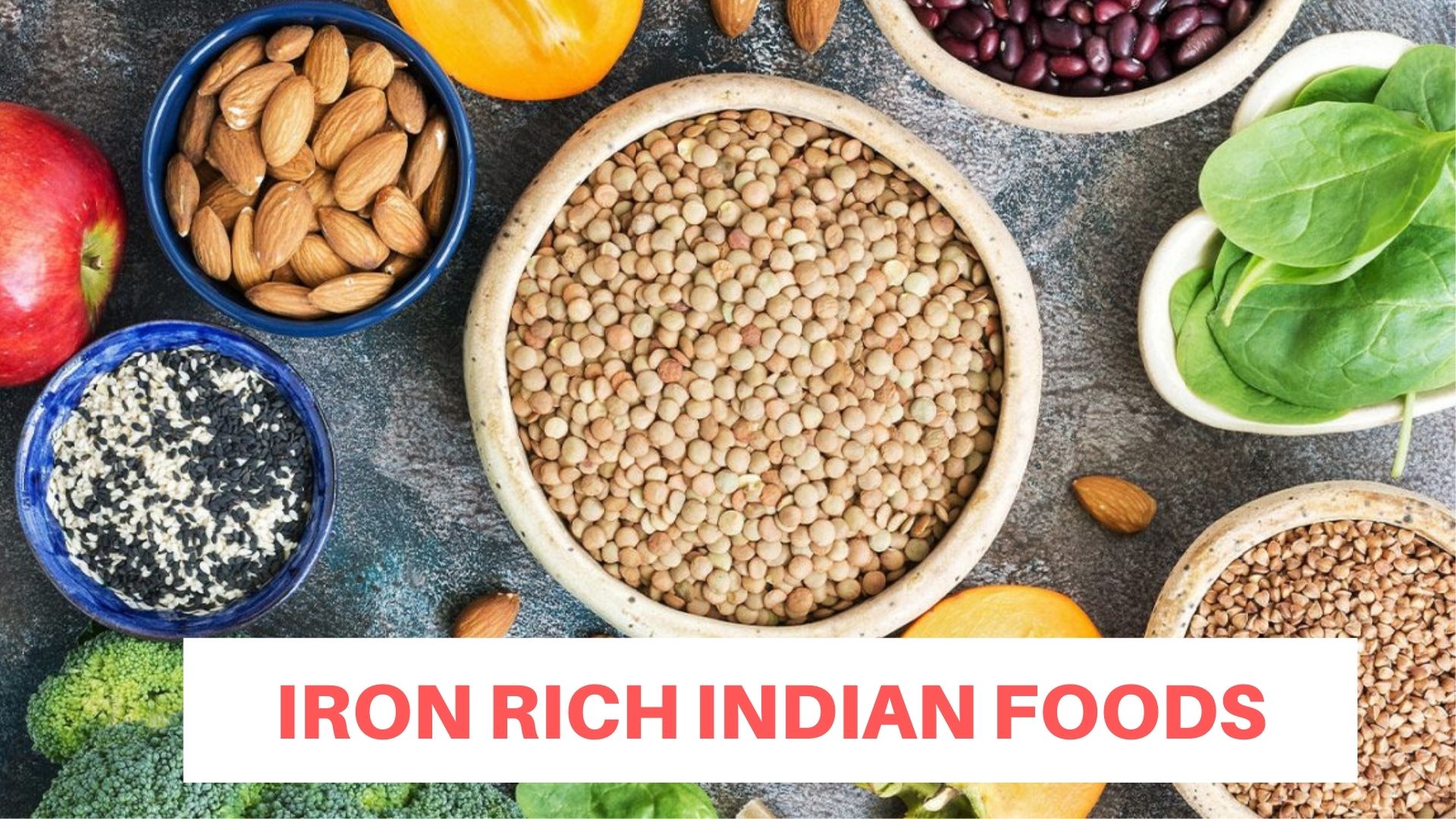List of Iron Rich Indian Foods
Have you been recently diagnosed with iron deficiency? Are you looking for iron rich Indian foods to increase iron intake in your diet? If you are health conscious and want to eat healthy, you are at the right place. Here you will find List of Iron Rich Indian Foods that can help you avoid ailments caused by deficiency of iron and boost your hemoglobin levels.
Table of Contents
What Is Iron? Why Do We Need It ?
Iron is an important nutrient required by our body. It is present in two forms: Hemoglobin and Myoglobin. Iron is responsible for making hemoglobin, the Red blood cells (RBCs) that transport oxygen in our blood from the lungs to different parts of the body. Myoglobin is a pigment that stores oxygen in muscles.
Without enough iron, the body cannot produce hemoglobin and thereby the tissues and organs will not get enough oxygen they need. Iron deficiency can lead to anemia and leave us feeling tired all of the time. Dizziness, lightheadedness, low concentration, irritability, pale skin, shortness of breath, heart palpitations, brittle nails, and damaged hair are all possible side effects of deficiency of iron.
Recent studies have shown that iron deficiency in children under the age of two years can have long-term and permanent effects on their brain development. This can have long-term detrimental effects on their learning and school performance. If a mother is iron deficient during her last trimester of pregnancy, her child’s cognitive growth can be harmed.
Iron Rich Indian Foods
Here’s a list of Iron rich Indian foods that can help you avoid complications caused by a lack of iron and boost your hemoglobin levels.
Beans
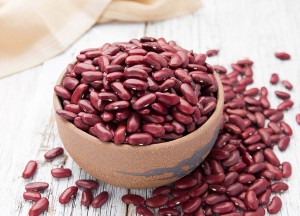
Beans like soybeans, kidney beans and chickpeas are good source of iron. Cook them in tomato-based sauces for extra absorption.
| Serving Size ( 1 Cup Cooked) | Iron Content |
| Soybeans | 8.84 mg |
| Kidney beans | 5.20 mg |
| Chickpeas | 4.74 mg |
Indian Dishes: Rajma Curry, Chole, Soybean Curry
Lentils
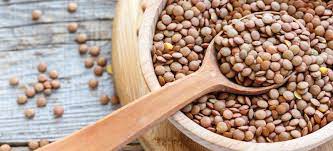
All dals or lentils such as toor dal, masoor dal, moon dal, urad dal, chana dal are high in iron, protein and fibre. Choose from a large selection of lentils available in our country.
| 100 gm Serving Size | Iron Content (% DV) |
| Moong Dal | 22 |
| Toor Dal | 15 |
| Chana Dal | 20 |
| Urad Dal | 19 |
| Masoor Dal | 30 |
Indian Dishes: Chana Dal Lauki, Moong Dal Khichdi, Dal Paratha, Dal Dhokli, Dal Fry, Moong Dal Chilla
Seeds

Iron is abundant in seeds such as khus- khus, sesame seeds, pumpkin seeds, and flaxseeds. Seeds are rich in monounsaturated fats, which are good for your heart. They also contain vitamins, minerals, proteins, enzymes, and antioxidants. To get the most out of them, eat them raw. When eaten on a daily basis, they have several health benefits.
| 100 gms Serving Size | Iron Content |
| Pumpkin Seeds | 3.3 mg |
| Sesame Seeds | 14.6 mg |
| Flax Seeds | 5.6 mg |
Indian Dishes: Til ke Ladoo, Khus khus halwa, Sprinkle on Salads
Nuts
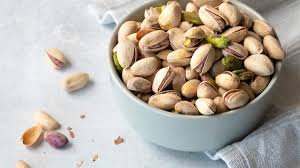
Iron is found in nuts such as pistachios, cashews, and almonds. Nuts contain essential proteins and nutrients and healthy fats and antioxidants, which help lower cholesterol and help you live longer. The key to getting the most out of nuts is to eat them in moderation.
| 100 gms Serving Size | Iron Content |
| Pistachios | 3.9 mg |
| Almonds | 5.4 mg |
| Cashews | 6.7 mg |
Indian Dishes: Almond Halwa
Dried Fruits
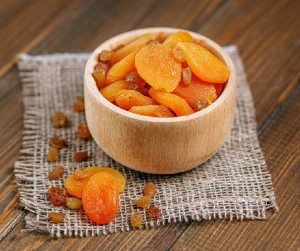
Iron deficiency can be fought by eating dried fruits including raisins and apricots on a regular basis. Raisins are also good for our digestion and strengthen our bones. Apricots contain a lot of antioxidants, which are good for your eyes, skin, and overall health.
| 100 gms Serving Size | Iron Content |
| Raisins | 2.6 mg |
| Apricots | 6.3 mg |
Indian Dishes: Add dried fruits to home made ladoos and halwa
Vegetables – Leafy Greens, Beetroot, Potatoes, Sweet Potatoes

We all know from our school days that green leafy vegetables like spinach, mint, mustard, fenugreek are great sources of iron. Add leafy vegetables to soups and dals. Potatoes have a lot of iron in them, which is mainly contained in their skins. One medium baked potato provides 10% of your daily iron requirement.
| 1 Cup Cooked Spinach | 6 mg |
| 100 gms Beetroot | 0.8 mg |
| 1 Large unpeeled Potato | 3.2 mg |
Indian Dishes: Palak Dal, Palak Paratha, Methi Paratha, Potato Curry, Baked Sweet Potato, Beetroot Kanji, Sarso ka Saag
Fruits – Watermelon, Apples, Pomegranate
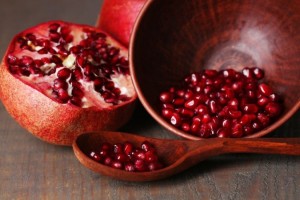
| 1 Cup Watermelon | 0.4 mg |
| 1 Medium Apple | 0.31 mg |
| 100 gms Pomegranate | 0.3 mg |
Fruits like watermelon, apples and pomegranates are a rich source of iron and must be consumed every day.
Grains and Cereals
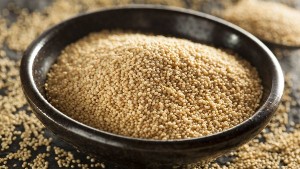
Grains such as Amaranth, Whole wheat flour, Bajra, Poha, Puffed rice, Jowar, Ragi are good sources of iron. Wheat bran is one of the three outer layers of the wheat kernel and is often stripped and discarded during milling. It does, however, contain around 6.1 mg of iron per cup, as well as other minerals and fiber. You can now find them in the market sold loosely. Add it to your wheat flour before making chapatis.
| 100 gms Serving Size | Iron Content |
| Amaranth | 12 mg |
| Whole wheat flour | 11 mg |
| Bajra | 8 mg |
| Poha | 6.1 mg |
| Ragi | 4.62 mg |
Indian Dishes: Poha, Ragi Idli, Bajra Roti, Bajra Khichdi, Whole wheat chapatti
Brown Rice
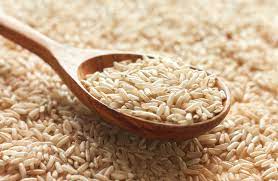
Another excellent choice for getting your regular dose of iron. To make a nutritious meal, replace white rice with brown rice.
Jaggery
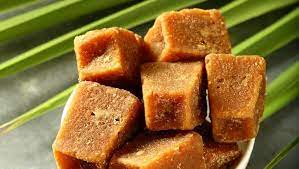
People with low haemoglobin should use this natural sweetener. Our forefathers and mothers would finish their meals with a small piece of gur to aid digestion and to improve immunity and antioxidant properties. You can substitute sugar with jaggery in your sweets.
| 100 gms Jaggery | 11 mg Iron |
Indian Dishes: Gur ka Halwa, Gur ki Roti, Gur ke Chawal
Dates
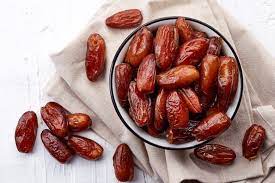
Dates are rich in vitamins and minerals such as iron, potassium, and magnesium, but they are also high in sugar, so don’t consume too much of them. It should be consumed on a daily basis by those suffering from anemia.
| 1/2 cup Dates (100 gms) | 0.9 mg Iron |
How Much Iron Do We Need ?
On average, 18 milligrams of iron is recommended daily for an individual. This requirement, however, will differ from person to person depending on age, health, gender, and life stage.
| DAILY IRON RECOMMENDATION LEVEL (MG/DAY) | |
|---|---|
| Men ( 19 yrs+) | 8 mg |
| Women (18-50 yrs) | 18 mg |
| Women (51 yrs +) | 8 mg |
| Pregnant Women | 27 mg |
| Lactating Women | 9 mg |
Men need just 8 mg of iron per day, while women need 18 mg. If you are wondering why do women need a higher level of iron than men? The explanation for this is that women menstruate and lose a lot of blood in a month, which can affect a woman’s total iron count.
Iron is equally important for kids too. The infographic below shows how much iron children need based on their age and gender. When you know that the daily recommended iron intake for adult males is 8mg and females (18-50) is 18 mg, you can see that children have reasonably high iron needs. Babies under 6 months who are on breast milk get their iron from mother’s milk.

Image Source: Healthylittlefoodies.com
How to Increase Iron Absorption ?
Below are the factors that will help in better absorption of iron:
Eat vitamin C-rich foods
Iron and Vitamin C go hand in hand. Iron absorption is increased when iron-rich foods are consumed alongside vitamin C-rich foods such as lemons, oranges, and tomatoes.
Use a cast iron pan
The iron content of food increases when we cook it in iron cookware, especially cast iron pans.
Avoid coffee and tea with meals
Iron absorption is reduced by 70 to 80 percent when tea or coffee is consumed with meals.
Soak, sprout and ferment
Soaking and sprouting improve the absorption of iron in the body by lowering the amount of phytates naturally present in these foods.
I hope you found the list of Iron rich Indian Foods helpful. You may also be interested in our article How to Increase Immunity in Kids?

